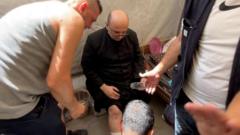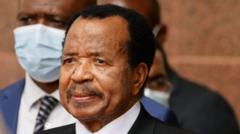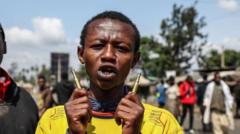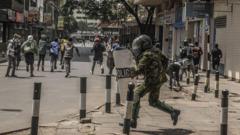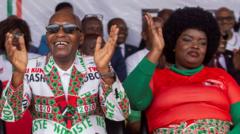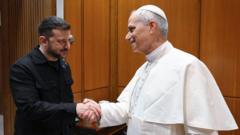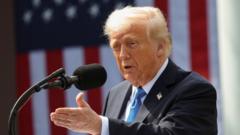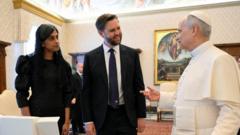Since his hospitalization for pneumonia, Pope Francis has remained active in decision-making, signing off on various appointments and moving forward with canonization processes, as confirmed by the Vatican. Even though he has been unable to engage with the public directly, the operational functions of the Holy See persist, raising questions regarding governance and authority should his health deteriorate further.
Pope Francis' Health Sparks Governance Concerns Amid Vatican Routine

Pope Francis' Health Sparks Governance Concerns Amid Vatican Routine
The Vatican reassures that Pope Francis continues to govern despite recent hospitalization for pneumonia; however, uncertainty looms over leadership continuity.
Pope Francis's ongoing struggles with health, now in his two-week hospitalization due to acute pneumonia, have drawn attention to the state of Vatican governance. While the Vatican maintains that the pope continues to make significant decisions—approving the appointment of 20 bishops, accepting resignations of four, and advancing five individuals toward sainthood—his absence from regular public engagements has altered the dynamics within the Church.
Matteo Bruni, a spokesperson for the Vatican, indicated that the 88-year-old pontiff remains in contact with his aides, although he has lost the crucial connection with the faithful during his recovery. He clarified that while the pope is no longer in critical condition, he is still not out of danger and requires ongoing clinical observation.
The papacy’s silent resilience, juxtaposed with critical health issues, raises pressing questions about the future leadership landscape of the Catholic Church in the event of further setbacks. Church officials emphasize that the mechanisms for decision-making continue, but there is a noticeable absence of direct pastoral leadership during this period of uncertainty.
Matteo Bruni, a spokesperson for the Vatican, indicated that the 88-year-old pontiff remains in contact with his aides, although he has lost the crucial connection with the faithful during his recovery. He clarified that while the pope is no longer in critical condition, he is still not out of danger and requires ongoing clinical observation.
The papacy’s silent resilience, juxtaposed with critical health issues, raises pressing questions about the future leadership landscape of the Catholic Church in the event of further setbacks. Church officials emphasize that the mechanisms for decision-making continue, but there is a noticeable absence of direct pastoral leadership during this period of uncertainty.


